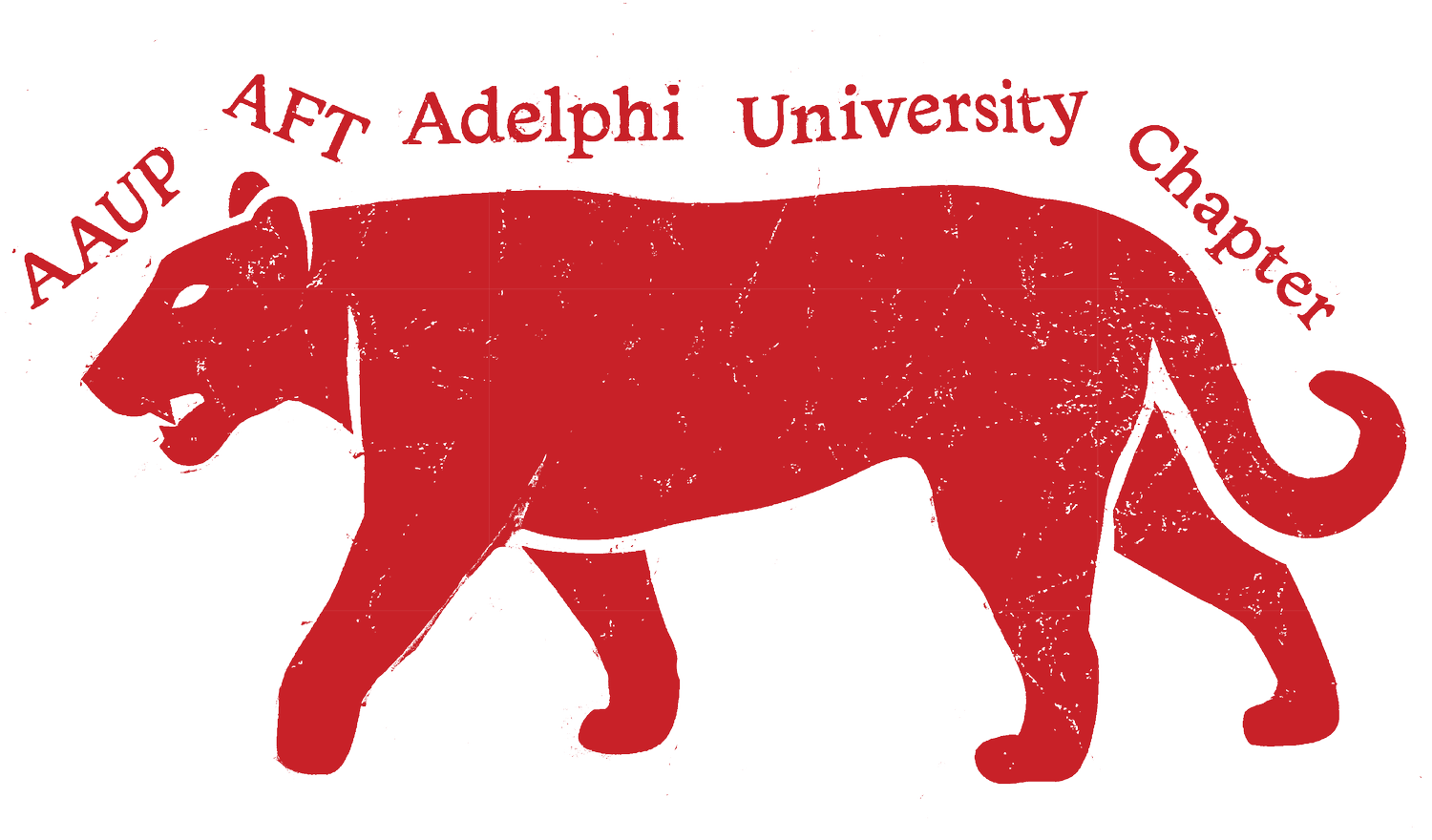by Maggie Gray
Don’t let anyone tell you that our shift to remote learning in the spring 2020 was a smooth transition. Online teaching and learning, in the best case requires careful planning and is extremely labor-intensive. According to Adelphi’s Faculty Center for Professional Excellence, I should expect to spend 200 hours in course development and that does not include the actual implementation of the course. The effort to shift to remote learning mid-semester was herculean. As former Interim President of the Adelphi Chapter of the AAUP, I am acutely aware of the labor that our faculty routinely put into each course. The pandemic only increased that workload.
It started with Spring Break, which we can now call the 2020 Spring Training. I spoke to so many faculty members who reported spending the entire break figuring out how to transition to remote learning and taking online workshops. Some of us could cut material and assessments, but for those who teach in the Sciences or Languages, for example, the next course is dependent on this one, so it was hard to trim. In other areas such as Nursing, licensing requirements set what is expected to be covered in courses—there’s no leeway.
Part of the work was figuring out how to transition. For an in-person class, I usually create an outline of points to cover, offer an introduction, and then guide my students through class discussion around certain themes. Most of the time, students bring up the points I want to highlight; when they don’t, I chime in. Transitioning to offering an asynchronous lecture required creating a clear PowerPoint, but also putting in the time to write a script for a 10-15 minute lecture over my slides. Preparing to implement this lecture took me four to five times as long as preparing for teaching in person (and that does not include the time it took to grade student comments on the lecture).
Implementation is another intense effort. My peers have described the time it takes to write comments on forums, listen to students recording, and newly keeping track of all students’ online engagement. At the same time, we are offering emotional support in a completely new way. One of my students lost three family members. Another described campus as his safe place away from the troubling dynamics in his home. A third, who was an essential worker at two food providers, described her very hectic work schedule and fears. I could go on and I’m not alone.
Also important to point out is that faculty are expected to engage, not just in teaching, but also service, and scholarly/creative work. Our reappointments and promotion are dependent on all three. Yet, one faculty mother of two told me she put her research on hold to teach both her students and homeschool her young children. We should not be surprised by the report that a recent review of journal article submissions showed a significant decline in single authored work by women. Women, who engage in more care work than men, are doing more reproductive labor and so their academic futures are being compromised by a lack of research productivity.
For all these reasons, we need to recognize the extraordinary labor of our faculty. Like our peers at other institutions, we lost our much-needed Spring Break—a time we use to catch up, recharge, and relax so that we are better teachers. Our effort to teach remotely was triage and, thanks to the dedication of our faculty, we were able to maintain an intellectual challenge for our students. We didn’t take shortcuts as you can see in the description of how our current chapter President Reem Khamis-Dakwar transitioned to remote teaching. Students were grateful for our patience and support—as evidenced in a recent blog post by Adelphi first year student Carlo Ammatuna. Let’s not lose sight of the fact that the success of any university is wholly defined by the labor of its faculty.
